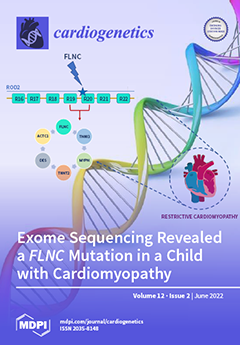Open AccessCase Report
Pancarditis as the Clinical Presentation of Eosinophilic Granulomatosis with Polyangiitis: A Multimodality Approach to Diagnosis
by
Michele Lioncino, Emanuele Monda, Santo Dellegrottaglie, Annapaola Cirillo, Martina Caiazza, Adelaide Fusco, Francesca Esposito, Federica Verrillo, Giovanni Ciccarelli, Marta Rubino, Massimo Triggiani, Raffaele Scarpa, Alida Linda Patrizia Caforio, Renzo Marcolongo, Stefania Rizzo, Cristina Basso, Gerardo Nigro, Maria Giovanna Russo, Paolo Golino and Giuseppe Limongelli
Cited by 1 | Viewed by 7138
Abstract
Eosinophilic pancarditis (EP) is a rare, often unrecognized condition caused by endomyocardial infiltration of eosinophil granulocytes (referred as eosinophilic myocarditis, EM) associated with pericardial involvement. EM has a variable clinical presentation, ranging from asymptomatic cases to acute cardiogenic shock requiring mechanical circulatory support
[...] Read more.
Eosinophilic pancarditis (EP) is a rare, often unrecognized condition caused by endomyocardial infiltration of eosinophil granulocytes (referred as eosinophilic myocarditis, EM) associated with pericardial involvement. EM has a variable clinical presentation, ranging from asymptomatic cases to acute cardiogenic shock requiring mechanical circulatory support (MCS) or chronic restrictive cardiomyopathy at high risk of progression to dilated cardiomyopathy (DCM). EP is associated with high in-hospital mortality, particularly when associated to endomyocardial thrombosis, coronary arteries vasculitis or severe left ventricular systolic dysfunction. To date, there is a lack of consensus about the optimal diagnostic algorithm and clinical management of patients with biopsy-proven EP. The differential diagnosis includes hypersensitivity myocarditis, eosinophil granulomatosis with polyangiitis (EGPA), hypereosinophilic syndrome, parasitic infections, pregnancy-related hypereosinophilia, malignancies, drug overdose (particularly clozapine) and Omenn syndrome (OMIM 603554). To our knowledge, we report the first case of pancarditis associated to eosinophilic granulomatosis with polyangiitis (EGPA) with negative anti-neutrophil cytoplasmic antibodies (ANCA). Treatment with steroids and azathioprine was promptly started. Six months later, the patient developed a relapse: treatment with subcutaneous mepolizumab was added on the top of standard therapy, with prompt disease activity remission. This case highlights the role of a multimodality approach for the diagnosis of cardiac involvement associated to systemic immune disorders.
Full article
►▼
Show Figures





